Pioneering Induction Heating Technology in Japan Using JMAG to Achieve Higher Accuracy and Quality in Induction Hardening
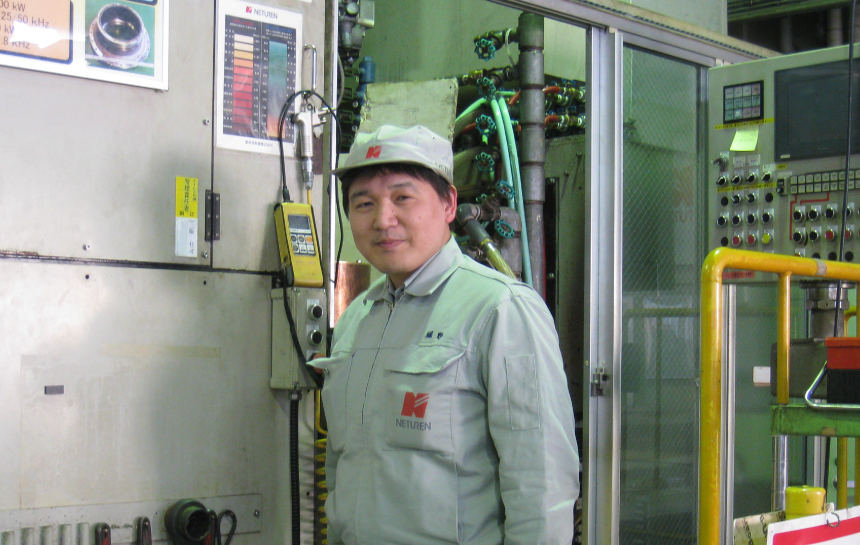
Neturen Co. Ltd. is the top domestic manufacturer when it comes to using induction heating (IH) technology to perform induction hardening on metal components. They have cutting-edge knowledge of the industry that can only be attained from continually developing new techniques and products based on IH technology. They apply JSOL Corporation’s electromagnetic field analysis software JMAG to their development process. JMAG is making big contributions to shortening trial production time, improving thermal processing quality, and developing new IH technology in their induction hardening.
Induction Hardening for Steel Surfaces Using High Electromagnetic Frequency Fields
Mr. Horino
We are pioneers that have succeeded in being the first to industrialize and commercialize induction heating (IH) technology in Japan. IH uses electricity, an environmentally friendly energy source, and is what we call a “W-Eco” technology because it is both ecological and economical.
Induction hardening is a surface hardening method that uses (high-frequency) electromagnetic induction phenomena as heat treatment for metal components in order to make them stronger and tougher. It is like the hardening and tempering used with a samurai sword: First a work piece is heated up to a temperature of around 1,000 deg C and alpha iron undergoes a phase transition to gamma iron, also called austenite. After that, very hard martensite is formed by rapidly cooling the austenite with water-cooling.
Induction hardening uses a heating coil. Running a high-frequency current through the heating coil causes AC magnetic flux to concentrate in the surface of the work piece. When this happens, the electromagnetic induction mechanisms induce eddy currents, which in turn heat the work piece. This is the same principle behind household IH cooking heaters. By selecting the frequency, power, heating time, retention time, and coil geometry according to the work piece’s shape and material, we can give each work piece the heat treatment quality that it requires.
We manufacture and sell several things: heat treatment for steel wire products like prestressed concrete bars for civil engineering and construction, vehicular spring wires, as well as Induction heating systems for automobiles and construction machine parts.
Mr. Horino
We started making a serious effort to utilize commercial software in around 1990. The heat treatment process requires real craftsmanship, so it’s a world of people with long years of experience and a sense for what they’re doing. The techniques were also extremely dependent on a person’s individual skills, and technical tradition used to be a big issue. When we utilized simulation technology we evaluated the heating time, frequency, and cooling time for optimal heat treatment quality, and were also able to verify new technology. The benefits of using simulation at our site are huge, even if it only gives us a general direction for our heat treatment.
Incredible User-Friendliness and Ample Support Collaborative Study Results
Mr. Horino
We implemented JMAG in 2007. We felt that the software that we had been using until then wasn’t as good from the standpoint of its functions. For example, in a heating coil the current tends to generate more in areas closer to the work piece instead of flowing evenly through its entire cross-section. This needs to be simulated correctly in order to obtain a correct temperature distribution, but the software that we used to use could not account for it. JMAG couples the simulation with an electric circuit and is able to calculate the current distribution in a cross-section automatically, even for parts like heating coils that have complex geometry. This makes it possible to perform a more correct and detailed analysis, which contributes greatly to shortening the lead time of development and design. JMAG’s customer support is also faster and more satisfactory than with other software, so we have been able to plan collaborative studies and get specific help from them.
Mr. Horino
Yes, that’s right. At the 2007 JMAG Users Conference we gave a presentation titled, “Computer Analysis of Dual Frequency Induction Heating.”
When the specifications of a work piece’s configuration or heat treatment quality change, the suitable frequency changes as well. In the past, we needed to prepare high-frequency power supply facilities for each necessary frequency. However, using dual frequency heating technology lets you output frequencies of your choosing from a single high frequency power supply, making it possible to perform hardening at the optimum frequencies (Figures 1 and 2). At our company we have prepared two kinds of systems: The hot switching system and the overlap system. We can analyze these in JMAG, enabling us to obtain the optimum power balance and heating time.
Mr. Horino
Let’s take a case where we perform induction hardening along the surface of the teeth of a spur gear. At a low frequency only the base of the tooth (the concave part) is heated, and at a high frequency only the tooth tip (the end of the convex part) is heated. By using low and high frequencies at the same time however, it becomes possible to perform uniform hardening along the teeth geometry (Fig. 2).
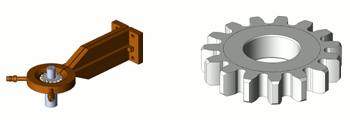 Fig. 1 A gear and heating coil
Fig. 1 A gear and heating coil
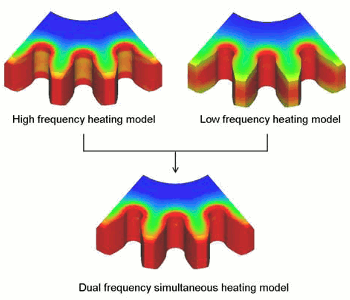 Fig. 2 The gear’s temperature distribution after heating
Fig. 2 The gear’s temperature distribution after heating
Mr. Horino
Yes, you could. Until now we had been figuring things out with our sense and years of experience, but using JMAG to obtain an optimum heating coil shape and heat treatment conditions has let me get highly accurate guidelines. We have some case examples where the development time has been cut in half.
Moving to the Realm of Even More Accurate Simulation With “Induction Heating Treatment Analysis”
Mr. Horino
Our expectations for JMAG get higher every year. Or, you could also say that our expectations for “induction heating treatment simulation” are getting higher.
Being more specific about it, there are four main factors for wanting to apply simulation technology to perform studies. They are facility design, heating coil geometry, heat treatment conditions, and heat treatment quality. Of course we can analyze these separately, but at our company we have established a method where we couple heat treatment software with JMAG and simulate the entire induction hardening process. This lets us run highly accurate simulations (Fig. 3). We use a magnetic field analysis as the base, and link a thermal analysis, metallography analysis, and a stress/strain analysis with each other.
Looking at the transient results, we can discover solutions to problems like why the work piece deforms during heat treatment and why residual stress occurs. This is why we are able to apply it as a tool that can preserve low levels of deformation and optimum heat treatment quality, even considering thinner, lighter, and more complex vehicle components.
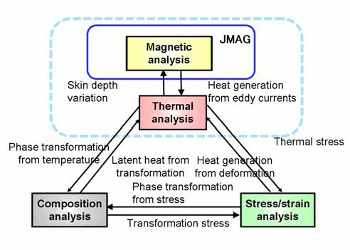 Fig. 3 “Induction Heating Treatment Analysis System”
Fig. 3 “Induction Heating Treatment Analysis System”
Mr. Horino
With JMAG, we can predict the heating range and temperature of a helical gear. When we coupled a structural analysis in JMAG, we were able to confirm that the twist angle of the teeth changes while the tips of the teeth spread up and down. We also performed simulations on the cooling process in addition to the heating process. These simulations made it possible to predict the hardening range, amount of distortion, and residual stress. This means that we can see the transitions in the work piece’s conditions by looking at heat treatment as a single general phenomenon.
Putting it simply, we can predict in advance the elements and conditions to achieve the heat processing quality and functionality that we are aiming for. This allows us to eliminate unexpected occurrences that happen during heat treatment, and it also gives us clues for developing high-quality components (Figures 4 and 5).
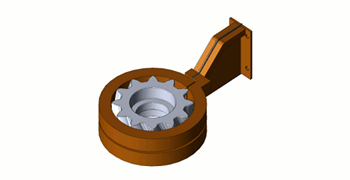 Fig. 4 A helical gear and heating coil
Fig. 4 A helical gear and heating coil
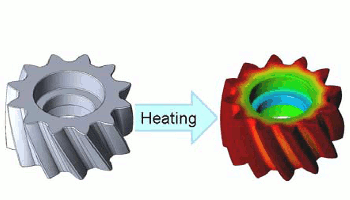 Fig. 5 Temperature distribution and deformation
Fig. 5 Temperature distribution and deformation
Mr. Horino
That’s right. Even with simulation software, if the work piece rotates and moves then we can perform precise calculations even when handling a complex geometry. If we can predict the heat treatment conditions of components that are complex, then the use of simulation will progress even further.
Mr. Horino
I want JMAG to enhance its three dimensional calculation features even more. When I want to handle more complex geometry, the model scale gets really big. I want shorter analysis time and faster operation for large analytical results.
JMAG’s Applications in Production Sites are Limitless, and It Contributes Even More to Efficiency
Mr. Horino
In the CAE development section of the development department that I am responsible for, I respond to requests from all of the divisions in the company, and I am putting effort into research and development that will be passed on to the next generation.
CAE is also playing a bigger role in the company, so in 2012 we started training activity using JMAG for those working in on-site departments. In the future we will use JMAG near production sites, and make it a tool that improves heat treatment quality and development of new technology. In addition, we are thinking of a system that takes efforts toward more advanced research challenges.
Mr. Horino
Induction hardening basically produces one work piece at a time, and it has the benefit of being able to handle large scale components. This is why JMAG will exhibit great ability in the field as a prediction tool.
CAE is also involved in part of the design and trial production process, so we have many benefits. For example, we can foresee problems in the production process, and verify new technologies as well. As a result, it allows high-satisfaction responses to customer requests.
I would like to use these activities to appeal to the world that IH is a “W-Eco” technology that is kind to the global environment.
Interviewee
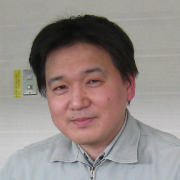
Mr. Takashi Horino
Manager, CAE Development Section,
Technical Department
Technical Headquarters,
NETUREN CO., LTD

[JMAG Newsletter September, 2012]


